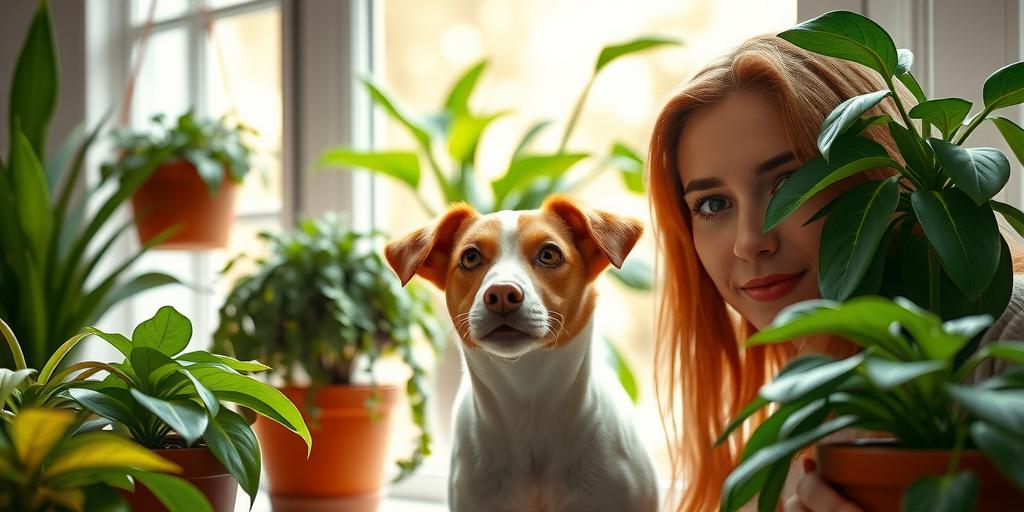
Pet-Safe Low Light Hanging Plants That Purify Indoor Air (2025)
Discover the best pet-safe, low-light hanging plants that purify indoor air! Keep your home fresh, stylish, and safe for furry friends with these easy-care options.
Introduction
Did you know indoor air can be up to 5 times more polluted than outdoor air? Luckily, nature has a solution—air-purifying plants! But if you have pets and limited sunlight, finding the right plants can be tricky. Don’t worry—we’ve got you covered! In this guide, we’ll explore the best pet-safe, low-light hanging plants that not only thrive in dim corners but also filter toxins from your home. Let’s dive in and greenify your space safely!
Why Choose Pet-Safe Low Light Hanging Plants?
Benefits of Air-Purifying Plants for Indoor Spaces
Indoor plants do more than just look pretty—they help clean the air! Many houseplants absorb toxins like formaldehyde and benzene, which can be found in common household products. If you live in an apartment or a home with limited ventilation, air-purifying plants can make a noticeable difference in air quality. Plus, they add a calming, natural touch to your space.
Risks of Toxic Plants for Cats and Dogs
While plants can be great for your home, some can be dangerous for pets. Common houseplants like pothos, philodendrons, and lilies are toxic to cats and dogs if ingested. Symptoms of poisoning can range from mild irritation to severe vomiting, seizures, or worse. That’s why choosing pet-safe plants is a must for pet owners who still want greenery in their homes.
Advantages of Hanging Plants in Small or Low-Light Areas
Hanging plants are perfect for small spaces because they don’t take up floor or shelf space. They also thrive in low-light conditions, making them ideal for rooms with few windows or north-facing spaces. Plus, trailing plants add a beautiful vertical element to your décor, creating a lush, jungle-like feel even in tight quarters.
Top 7 Pet-Safe Low Light Hanging Plants
Spider Plant (Chlorophytum comosum)
Spider plants are one of the easiest plants to care for—they’re nearly indestructible! They thrive in low to moderate light and are completely non-toxic to pets. Bonus: They produce “pups” (baby spider plants) that you can propagate and share with friends.
Boston Fern (Nephrolepis exaltata)
If you love full, feathery foliage, the Boston fern is a fantastic choice. It’s safe for pets and thrives in humid environments, making it great for bathrooms. Just keep the soil consistently moist, and it’ll reward you with lush, cascading fronds.
Parlor Palm (Chamaedorea elegans)
This elegant palm adds a tropical touch to any room and is completely pet-safe. It grows well in low light and doesn’t require frequent watering, making it a low-maintenance option for busy plant parents.
Peperomia (Various species)
Peperomias come in many varieties, from the watermelon-striped leaves of Peperomia argyreia to the trailing stems of Peperomia prostrata. They’re compact, colorful, and completely safe for pets. Plus, they’re drought-tolerant, so they won’t mind if you forget to water them occasionally.
Staghorn Fern (Platycerium bifurcatum)
With its unique, antler-shaped leaves, the staghorn fern makes a striking statement. It’s non-toxic and thrives in indirect light. Since it’s an epiphyte (meaning it grows on other plants in nature), it does best mounted on wood or in a hanging basket with well-draining soil.
String of Hearts (Ceropegia woodii)
This delicate trailing plant features heart-shaped leaves on long, slender stems. It’s drought-tolerant, pet-safe, and grows beautifully in low to bright indirect light. Hang it near a window, and it’ll cascade beautifully over time.
Baby’s Tears (Soleirolia soleirolii)
If you love a soft, cascading look, baby’s tears is a great pick. Its tiny, round leaves create a lush, waterfall effect. It loves moisture, so it’s perfect for terrariums or humid rooms—just keep it out of reach if your pet likes to nibble, as too much chewing could upset their stomach.
How to Care for Low Light Hanging Plants
Best Placement for Optimal Growth
Most low-light hanging plants do best in bright, indirect light—think near a north-facing window or a few feet away from an east or west-facing one. Avoid direct sunlight, which can scorch their leaves. If your space is very dark, consider supplementing with a grow light.
Watering Tips to Prevent Over/Underwatering
Overwatering is the #1 killer of houseplants. Always check the soil before watering—stick your finger in about an inch deep. If it’s dry, it’s time to water. If it’s still damp, wait a few more days. Hanging plants dry out faster than potted ones, so keep an eye on them, especially in warmer months.
Ideal Soil and Potting Mix for Healthy Roots
A well-draining potting mix is key. Look for mixes labeled for indoor plants, or make your own with equal parts potting soil, perlite, and orchid bark. This prevents water from sitting at the roots, which can cause rot.
Simple Pruning and Maintenance Tricks
Trim yellow or dead leaves regularly to encourage new growth. For trailing plants like string of hearts, occasional pruning keeps them looking full. Wipe dust off leaves with a damp cloth to help them absorb more light.
Pet Safety Tips for Indoor Plants
How to Deter Pets from Chewing on Plants
If your pet is too curious, try these tricks:
-
Hang plants out of reach (high shelves or ceiling hooks).
-
Use bitter-tasting sprays (pet-safe ones) on leaves.
-
Provide pet grass or catnip as a distraction.
Signs of Plant Toxicity in Cats and Dogs
Watch for vomiting, drooling, lethargy, or difficulty breathing. If you suspect your pet ate a toxic plant, contact your vet or the ASPCA Animal Poison Control Center immediately.
Pet-Safe Alternatives if Your Furry Friend Is Too Curious
If your pet won’t leave plants alone, opt for sturdy, non-toxic options like spider plants or palms. You can also try artificial plants for a no-risk greenery fix.
Styling Ideas: Hanging Plants for Home Decor
Creative Ways to Display Hanging Plants
-
Macramé hangers – Add boho charm to any room.
-
Wall-mounted shelves – Perfect for layering multiple trailing plants.
-
Ceiling hooks – Create a floating garden effect in corners or above furniture.
Best Rooms to Place Air-Purifying Plants
-
Bedroom – Promotes better air quality for sleep.
-
Bathroom – Thrives in humidity (great for ferns).
-
Kitchen – Helps filter cooking odors.
Pairing Plants for a Lush, Layered Look
Mix textures and lengths for visual interest—try a spider plant with a string of hearts and a staghorn fern. Grouping different shades of green creates depth, making your space feel like an indoor jungle.
Conclusion
Who says you need bright light or a pet-free home to enjoy lush, air-purifying plants? With these pet-safe, low-light hanging plants, you can create a healthier, greener living space without worry. Whether you opt for a trailing Spider Plant or a whimsical String of Hearts, there’s a perfect plant for every corner. Ready to transform your home? Pick your favorites and start hanging!
